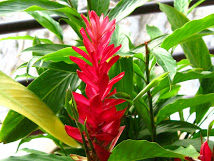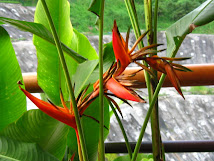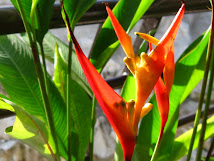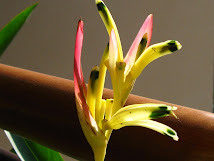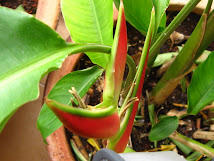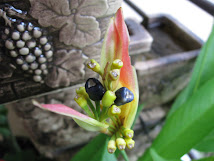







Today, I saw a marvelous sight.... a small bird with a long beak sucking the nectar from one of my heliconias i.e Andromeda :-)
All about growing exotic Heliconias in my Garden in Penang, Malaysia









Heliconias may be distinguished from other members of the Zingiberales by their inverted flowers, a sterile staminode and fruits which are drupes (a hard seed surrounded by fleshy pulp).
In their natural habitat, Heliconia typically occupy clearings on the forest floor in humid tropical rain-forests, especially in places where sunlight can penetrate through the leaf canopy, and also along river banks.
Having recently read the book 'Indentification of Heliconias', I am now able to identify 11 out of the 12 heliconias that is now residing on my balcony garden based on height; inflorescence particular on number of bracts, color of rachis, sepals, ovary and pedicel; leave form.
